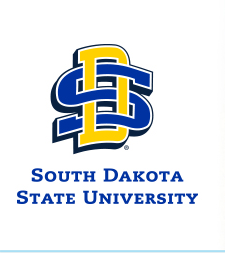Comparison of Creatine Ingestion and Resistance Training on Energy Expenditure and Limb Blood Flow
Document Type
Article
Publication Date
12-2001
Abstract
This study determined the effects of 28 days of oral creatine ingestion (days 1 to 5 = 20g/d; [5 g 4 times daily]: days 6 to 28 = 10 g/d; [5 g twice daily]) alone and with resistance training (5 hours/week) on resting metabolic rate (RMR), body composition, muscular strength (1RM), and limb blood flow (LBF). Using a double-blind, placebo-controlled design, 30 healthy male volunteers (21 [plusmn] 3 years; 18 to 30 years) were randomly assigned to 1 of 3 groups; pure creatine monohydrate alone (Cr; n = 10), creatine plus resistance training (Cr-RT; n = 10), or placebo plus resistance training (P-RT; n = 10). Body composition (DEXA, Lunar DPX-IQ), body mass, bench, and leg press 1RM (isotonic), RMR (indirect calorimetry; ventilated hood), and forearm and calf LBF (venous occlusive plethysmography) were obtained on all 30 subjects on 3 occasions beginning at approximately 6:00 AM following an overnight fast and 24 hours removed from the last training session; baseline (day 0), and 7 days and 29 days following the interventions. No differences existed among groups at baseline for any of the variables measured. Following the 28-day interventions, body mass (Cr, 73.9 [plusmn] 11.5 v 75.6 [plusmn] 12.5 kg; Cr-RT, 78.8 [plusmn] 6.7 v 80.8 [plusmn] 6.8 kg; P [lt ] .01) and total body water (Cr, 40.4 [plusmn] 6.8 v 42.6 [plusmn] 7.2 L, 5.5%; Cr-RT, 40.6 [plusmn] 2.4 v 42.3 [plusmn] 2.2 L, 4.3%; P [lt ] .01) increased significantly in Cr and Cr-RT, but remained unchanged in P-RT, whereas, fat-free mass (FFM) increased significantly in Cr-RT (63 [plusmn] 2.8 v 64.7 [plusmn] 3.6 kg; P [lt ] .01) and showed a tendency to increase in Cr (58.1 [plusmn] 8.1 v 59 [plusmn] 8.8 kg; P = .07). Following the 28-day period, all groups significantly increased (P [lt ] .01) bench (Cr, 77.3 [plusmn] 4 v 83.2 [plusmn] 3.6 kg; Cr-RT, 76.8 [plusmn] 4.5 v90.5 [plusmn] 4.5 kg; P-RT, 76.0 [plusmn] 3.4 v 85.5 [plusmn] 3.2 kg), and leg press (Cr, 205.5 [plusmn] 14.5 v238.6 [plusmn] 13.2 kg; Cr-RT, 167.7 [plusmn] 13.2 v 238.6 [plusmn] 17.3 kg; P-RT, 200.5 [plusmn] 9.5 v 255 [plusmn] 13.2 kg) 1RM muscular strength. However, Cr-RT improved significantly more (P [lt ] .05) on the leg press 1RM than Cr and P-RT and the bench press 1RM than Cr (P [lt ] .01). Calf (30%) and forearm (38%) LBF increased significantly (P [lt ] .05) in the Cr-RT, but remained unchanged in the Cr and P-RT groups following the supplementation period. RMR expressed on an absolute basis was increased in the Cr (1,860.1 [plusmn] 164.9 v1,907 [plusmn] 173.4 kcal/d, 2.5%; P [lt ] .05) and Cr-RT (1,971.4 [plusmn] 171.8 v 2,085.7 [plusmn] 183.6 kcal/d, 5%; P [lt ] .05), but remained unchanged from baseline in P-RT. Total cholesterol decreased significantly in Cr-RT ([minus ]9.9%; 172 [plusmn] 27 v 155 [plusmn] 26 mg/dL; P [lt ] .01) compared with Cr (174 [plusmn] 46 v 178 [plusmn] 43 mg/dL) and P-RT (162 [plusmn] 32 v 161 [plusmn] 36 mg/dL) following the 28-day intervention. These findings suggest that the addition of creatine supplementation to resistance training significantly increases total and fat-free body mass, muscular strength, peripheral blood flow, and resting energy expenditure and improves blood cholesterol.
Publication Title
Metabolism: Clinical and Experimental
Volume
50
Issue
12
First Page
1429
Last Page
1434
DOI of Published Version
10.1053/meta.2001.28159
Publisher
Elsevier
Recommended Citation
Arciero, Paul J.; Hannibal, Norman S. III; Nindl, Bradley C.; Gentile, Christopher L.; Hamed, Jason; and Vukovich, Matthew, "Comparison of Creatine Ingestion and Resistance Training on Energy Expenditure and Limb Blood Flow" (2001). Health and Nutritional Sciences Faculty Publications. 15.
https://openprairie.sdstate.edu/hns_pubs/15
